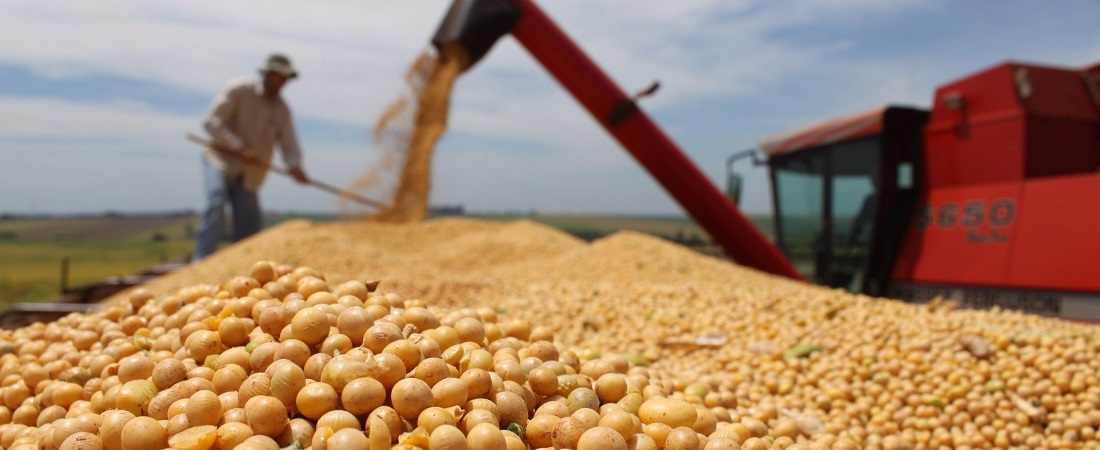
Brazil sets record for soybean exports despite sluggish trade
Aug, 25, 2023 Posted by Gabriel MalheirosWeek 202335
Despite the slow pace of soybean trade in the past five years, the first seven months of 2023 have seen Brazil achieve a record volume of exports, reaching over 70 million tonnes, as reported by the country’s National Supply Company (Conab) on August 24th.
China, a key importer, purchased 62.3 million tonnes of soybeans, marking a 15% increase from the same period in 2022. “Brazilian farmers have sold around 80.93% of the imported volume to date, totaling 50.42 million tonnes of soybeans, according to data from the Foreign Trade Secretariat (Secex),” noted Leonardo Amazonas, a market analyst at Conab.
Conab projects total Brazilian soybean exports in 2023 to reach 95.64 million tonnes, reflecting a 21.5% growth compared to the previous year.
Soybean exports for July reached 9.7 million tonnes, buoyed by international price hikes and positive premiums at port terminals. July saw Chicago futures prices rise 5.48% over June and remain 2.79% lower than July 2022. This grain price appreciation, driven by US climate uncertainties, echoed in domestic prices, reported Conab experts.
The chart below shows the volume of Brazilian soybean and soymeal exports, measured in tonnes, between Jan 2019 and Jun 2026, according to the DataLiner intelligence service.
Brazilian soy exports | Jan 2019 – Jun 2026 | WTMT
Source: DataLiner (click here to request a demo)
US Climate and Prices
Conab analyst Leonardo Amazonas highlighted that the United States Department of Agriculture (USDA) recently lowered its soybean crop productivity estimate. The estimated production of 114.5 million tonnes marks the lowest since the 2020/21 season. On one hand, record global production limits more pronounced price hikes, while on the other, evaluations that US stocks are low support Chicago quotations.
“The American crop is still uncertain and will only be harvested in September. Further production cuts are possible, as the crop is in the grain-filling phase, and severe drought may impact productivity,” noted the Conab report.
On August 24th, Chicago soybean prices responded to rising demand for US oilseed beans. The USDA’s report indicated a net sales balance (when confirmations exceed cancellations) of 1.2 million tonnes for the 2023/24 season, ending on August 17th.
While slightly lower than the previous week (1.4 million), the volume was close to market expectations. The November contract in Chicago, the most traded, rose by 11.2 cents (0.83%) and closed at $13.71 per bushel, nearing the day’s high of $13.73. Contracts for January 2024 increased by 12.4 cents and closed at $13.83, similarly near their peak ($13.84).
Climate effects on fields remain a point of attention for market operators. On August 21st, the USDA maintained its estimate of 59% of soybean crops rated as good to excellent. They made only a one-percentage-point upward adjustment to “good” (from 48% to 49%) and a one-point downward adjustment to “excellent” (from 11% to 10%).
Regular areas decreased from 29% to 28%, poor areas remained at 9%, and very poor areas rose from 3% to 4% of the total. The survey covers 18 producing states.
As of August 24th, the U.S. Drought Monitor map indicated severe and extreme drought in certain parts of Minnesota, Iowa, and Missouri. Furthermore, the USDA noted that there had been few rain accumulations in areas north of Wisconsin and Michigan.
“Average weekly temperatures were below normal in much of the region, except for areas in southern Missouri, southern Illinois, and central Wisconsin, where temperatures were a few degrees above normal,” reported the USDA.
This week, the Pro Farmer Crop Tour explored producer regions in the US grain belt and indicated higher yields in some areas. The numbers released until Thursday brought some volatility to the Chicago market.
Expectations of improved field results may, to some extent, help limit price increases on the American exchange. Alternatively, it could even exert downward price pressure, depending on traders’ perceptions of US soybean futures contracts in relation to the US crop and its impact on supply and demand.
Source: Globo Rural
To read the original news text, visit: https://globorural.globo.com/agricultura/soja/noticia/2023/08/brasil-exporta-volume-recorde-de-soja-para-o-periodo-de-janeiro-a-julho.ghtml
-
Ports and Terminals
Feb, 18, 2020
0
Portonave aiming to reduce carrier dwell time
-
Other Logistics
Jun, 01, 2023
0
São Paulo industries see remarkable 25% growth in container transportation
-
Meat
Oct, 13, 2023
0
Brazil’s Pork Exports Surge 9.2% in September, Gaining New Markets
-
Grains
Oct, 19, 2021
0
ANEC raises October forecast for Brazilian soybean and corn exports


